Useful tips: is it possible to transplant a violet during flowering
From ornamental plants on the windowsill violet most popular. It is appreciated for the duration of flowering, the variety of varieties that delight in shapes and shades. There are both simple in appearance plants and collectible ones, distinguished by a bright unusual color of large double petals. It is not difficult to grow the Uzambara violet, or Saintpaulia, observing all the rules of care and transplantation.
The Uzambara violet is often transplanted. And the reason for the procedure can be both disease and damage to the plant by a pest. But according to the plan, the flower requires a transplant annually, because it is impossible to leave Saintpaulia in one pot for a long time, the soil cannot. The soil during the growing season of the violet is depleted, and it must be replaced with a new one.
Content:
- The best varieties of violets for growing at home
- Can a violet be transplanted during flowering?
- When is it better to transplant an uzambara violet?
- Soil preparation, pot, transplant rules
- Caring for an ornamental crop after transplanting
- The consequences of improper cultivation
The best varieties of violets for growing at home
Breeders annually update the flower market with new varieties of violets. Among them, the best should be highlighted:
- Saintpaulia Currant dessert is famous for its semi-double flowers with a fringe of a violet hue along the edges of the petals.
- It is not for nothing that the winter rose is called that, because violet flowers resemble the queen of a flower bed with their structure. And the petals are painted in a dark purple color.
- In the Blue Baltic, semi-double flowers reach large sizes with a white border around the edges.
- Violet Alice Blizzard Baths in the form of flowers resemble snow-white stars.
- Delicate large white flowers with wavy edges make up the Bridal Bouquet variety.
- Georgia has deep pink petals with a dark border around the edge and interspersed with a lilac tone. Saintpaulia blooms profusely under good growing conditions.
- The flowers of the Marquise are very beautiful. Their deep pink color is set off along the wavy edge of delicate petals with a purple border.
- Lilac charm has powerful peduncles. The variety is unpretentious, blooms profusely for a long time.
- Gentle blue flowers of Saintpaulia Blue Dragon. But the plant is capricious and requires proper care.
All varieties of the uzambara violet have beautiful dark green leaves with a velvety or smooth surface. They give violets special decorativeness.
Can a violet be transplanted during flowering?
One of the main conditions for growing a room culture is the transplantation of an adult plant. And you can't be lazy here, otherwise the flower will start to wither due to a lack of nutrients. One change of the surface layer of soil in a pot is not enough. The soil in the container for a year - two vegetation of Saintpaulia will be depleted, saline due to the waste of the flower. And keeping the plant in the old soil does not make sense. It can die. The soil in the container from loose and permeable becomes dense, with a large amount of salts, white bloom on the surface.
You can transplant a violet during the flowering period.
A violet transplant is urgently required in the event that an adult plant is damaged by pests or infection. At the same time, the leaves of Saintpaulia lose their attractiveness, the plates become stained, turn yellow. The flowers become smaller, dry up, and the plant needs a change of pot and soil.
Violets can also be transplanted during flowering. The procedure does not affect the state of the decorative culture in any way. One to two days before transplanting, the buds and peduncles are removed. The plant easily tolerates the procedure. Although for a while the Saintpaulia stops blooming, but soon the buds begin to form again.
When is it better to transplant an uzambara violet?
For Saintpaulia, the best period for transplanting is considered to be the beginning of spring (February - March) and the autumn months - September and October. Many flower growers advise growing violets a double transplant, adult plants - once. The procedure is mandatory, since replacing the soil will rid the plant of impurities and salts accumulated in the container. Otherwise, the roots will have nowhere to take the elements necessary for the vegetation of the violets.
During the beginning of spring, daylight hours increase, which contributes to the formation of buds on an ornamental bush. Now it remains to provide Saintpaulia with trace elements for better and active budding. And only a new soil substrate can give them.
A transplant is carried out in case it is necessary to replace the pot, since the volume of the old one has been mastered. The soil in the container should be completely replaced when:
- violet withers due to soil acidification
- Saintpaulia has been in one container for more than two years
- roots have sprouted outside the drainage holes
- you need to rejuvenate the plant, update the roots
The choice of time for transplanting depends on the state of the uzambar violet, the peculiarities of its development.
Soil preparation, pot, transplant rules
They begin to transplant the plant with preparatory work.
- It is better to purchase soil substrate in the store. It has the necessary elements, there are no pathogenic microorganisms and parasitic larvae in it. You can add perlite, vermiculite to the soil, which will provide the soil looseness.
- The drainage layer is prepared from expanded clay, foam crumbs. And the best fit sphagnum moss, which will regulate the moisture content of the soil, taking away excess moisture and giving away the missing one.
- The capacity is selected in accordance with the diameter of the outlet. The size of the new pot should be small, two to three centimeters larger root system.Before transplanting, the containers are disinfected with boiling water or a solution of potassium permanganate.
- Pulling a violet bush out of an old container along with a lump of earth on the roots, they examine the plant. The lower rows of yellowed leaves are removed, and healthy ones are left. Carefully knead a lump of soil on the roots, examine them. Damaged and old roots are carefully trimmed.
A drainage layer is placed in a prepared pot, a little fresh moistened soil. A Saintpaulia bush is placed in the center so that the bottom row of leaves is at the level of the edge of the pot or one centimeter lower. The roots are straightened and covered with fresh substrate. When transplanting, it is important not to deepen the growth point.
In order for the roots to get used to the new soil, the plant is not watered for four days. Then moisten the soil in the pot carefully and only after the top layer has dried.
A correctly carried out transplant will enable the violet to prepare for flowering.
Caring for an ornamental crop after transplanting
Caring for violets after transplantation is usual and consists of:
- Water the flower so that excess moisture does not accumulate in the pot. You can arrange for watering through the pallet. After pouring water, wait twenty minutes, draining the remaining liquid. For irrigation, use settled water at room temperature. Moisten the violet so that liquid does not get inside the outlet. Drought for Saintpaulia is dangerous, it will lead to the death of the plant.
- If a flower is transplanted twice a year, then top dressing does not need to be applied often.In winter, fertilize with organic matter once. And during the growing season they feed three times mineral complexes for violets. In order for the flowering of the plant to be lush, it is necessary to add more potassium and phosphorus to the soil. Young plants need nitrogen. Overloading, as well as a lack of minerals, is unacceptable.
- In winter, violets are provided with additional lighting with lamps, since they need a long daylight hours even during the dormant period.
Some types of violets are pinched to create a luxurious ornamental shrub.
The consequences of improper cultivation
For an indoor flower, the consequences of improper care affect the appearance:
- Growth retardation in violets occurs when the plant does not have enough light. Vegetation stops if the indoor air is cold or dry.
- The violet does not bloom due to a lack of light in the winter, as well as due to constant transplants.
- If brown spots appear on the leaves of Saintpaulia or the plate is all in holes, then these are burns from the rays of the sun. It is necessary to change the place of the plant in the room.
- After watering with cold water, brown spots appear on the leaves of the violet.
- With a sharp change in the living conditions of Saintpaulia, the buds of the plant begin to fall off. The flower reacts similarly to excess fertilizers in the soil.
- Abundant watering leads to decay of the roots, and as a result, lethargy of the leaves, falling flowers.
Decorative violet requires close attention, careful care.
More information can be found in the video:



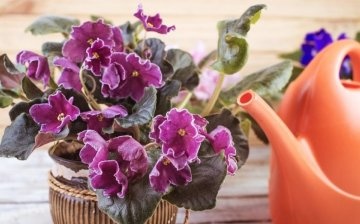
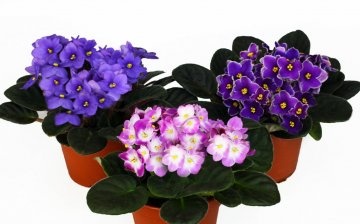
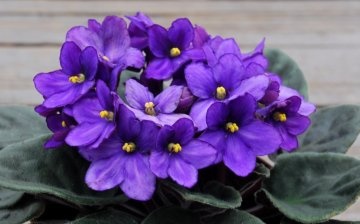
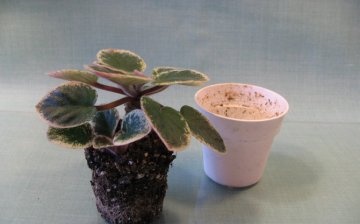
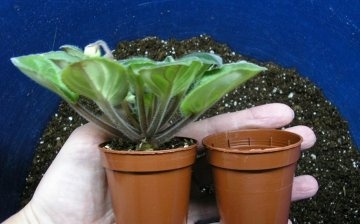
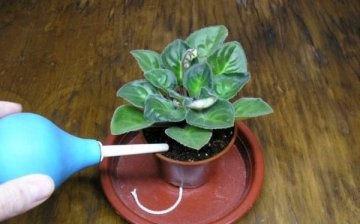
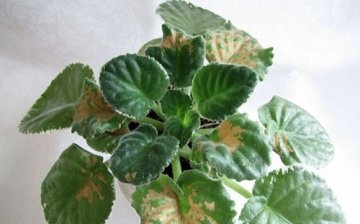








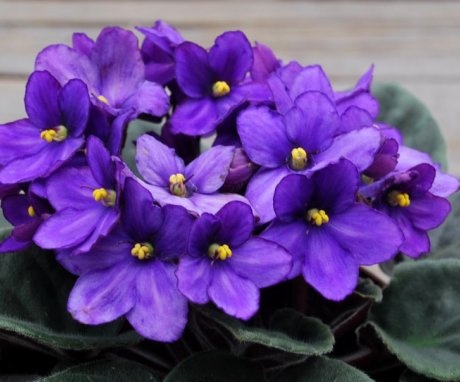
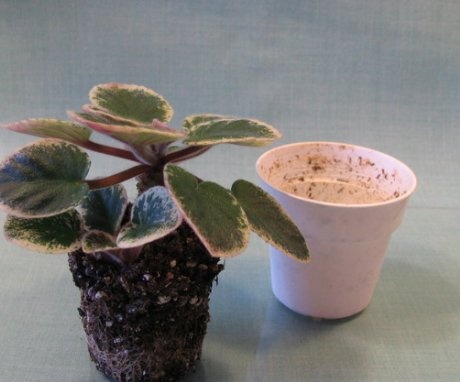
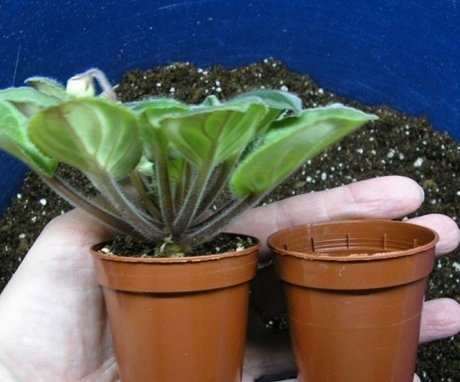
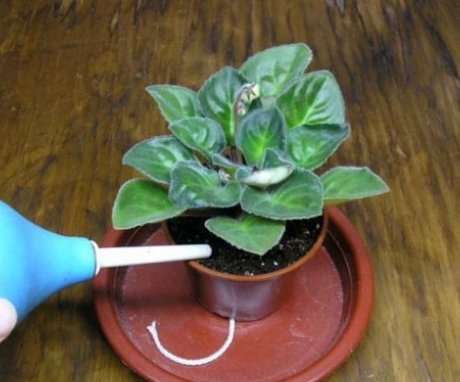

I always try to wait for the flower to bloom, but not in the case of violets, as they bloom with me for almost a whole year. Therefore, I transplant it as needed, regardless of the flowering of the plant.
I agree with you completely and we also transplant violets as needed, since they bloom for a long time and there is no point in waiting for the flowering to end.
You know, I don’t transplant a violet. When the flower is already "old" and "worked out" its resource, I take a leaf. I put it in a glass of water and root a new plant. The violet grows quickly.
Interesting information, but for some reason I was convinced that the violet should not be transplanted during flowering, and did not do it. It seemed to me that if you transplant it, then the flowering will stop.